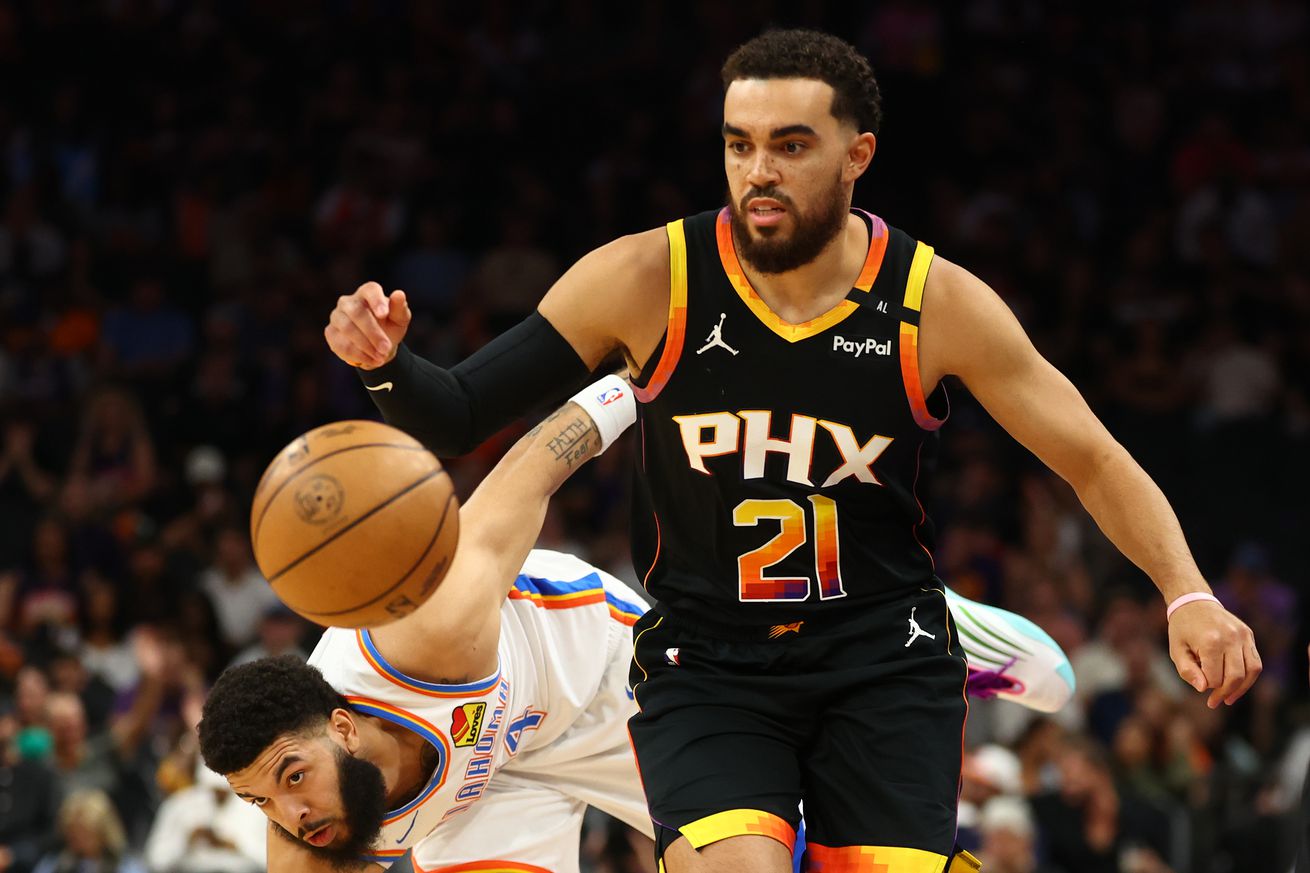
Tyus Jones’ played nearly every game, but his performance wasn’t as consistent as his availability.
Welcome to our Phoenix Suns Season in Review series, where we take a closer look at each player who suited up during the 2024–25 campaign. One by one, we’ll break down what went right, what went wrong, and what each player can do to take the next step heading into next season.
Tyus Jones was supposed to be the starting point guard that was going to relieve Devin Booker and Bradley Beal of ball handling responsibilities and give them better opportunities to do what they do best: score the ball. To start the year, that was coming to fruition, the Valley’s offense was humming and the team went 8-1 to start, with Jones leading the point guard duties.
However, as the season went on and the Suns started to spiral out of control, Jones’ minutes and impact started to dwindle with it. When Bradley Beal first exited the starting lineup, his impact first started to go down, with Booker and Kevin Durant taking on more offensive responsibilities and making Jones, more of an off-ball player rather than a pass first one.
With Jones taking less money to sign with Phoenix, it was a sign of a strong culture and good management, but his play on the court did not help the Suns have a strong season as was expected.
Tyus Jones
- Position: Point Guard
- Vitals: 6’1”, 196 pounds, 28 years old
- Experience: 10 years
- Stats: 81 GP, 10.2 PPG (44.8 FG%, 41.4 3PT%, 89.5 FT%), 5.3 APG, 2.4 RPG
Contract Details
Jones signed a one-year, $3.3 million deal with the Valley this past offseason. At the time of the signing, the deal was considered a bargain for Phoenix, as Jones took less money to get the opportunity to start for a team that went to the playoffs the season before. Jones will be an unrestricted free agent this summer. If the Suns do not get out of the tax and second apron, they will not be able to offer Jones anything more than a minimum deal.
Regular Season Recap
Jones started the year off strong, averaging 12.6 points and 6.3 assists on 49/44/86 splits, averaging just 1.3 turnovers a game for the 2024 part of the calendar. When December became January, his production, along with his minutes, started to dip for the rest of the season. Averaging 8.7 points and 4.7 assists on 41/40/93 splits in 24 minutes a game.
When Bradley Beal went to the bench, Jones’ role changed. He handled the ball less and took fewer shots. After being a starter to begin the season, with the Suns struggling, Jones went to the bench for some games, where his role and minutes became even more limited.
After some strong performances by Collin Gillespie in March, Jones became the point guard two behind him.
Jones missed just one game on the year and was incredibly durable. However, the lack of durability for the rest of the team hindered the point guard’s ability to establish a solid rhythm with the rest of his teammates in his first year in the Valley.
Biggest Strength
Jones’ durability was the best of any player on the Suns. Playing in 81 games, he participated in the most contests for the Suns this year. Playing different roles and adjusting to different lineups, he was always available and provided Mike Budenholzer a formidable offensive presence every game.
Biggest Weakness
Size, rather, a lack thereof. Jones was a defensive liability for the Suns this year. With the team struggling immensely on the defensive side of the ball, his lack of height and size proved to be costly for the Suns. While he wasn’t the only issue for the Suns’ defense, most defenders had the chance to take advantage of his small frame and hunt him on defense.
Likelihood of Return: 2
It was always understood Jones was going to be a rental for this team considering how much money he left on the table to join the Suns for the season. He didn’t have a strong year for his standards and maybe that will tank his value a bit going into this year’s free agency, but there’s expected to be a lot of turnaround this offseason in the Valley and he does not appear to be apart of the future.
Overall Grade: C+
Jones started the year much better than he finished it. Perhaps if the Suns were more organized and cohesive as a unit, his impact would have been larger. His durability was the best on the team, and he adapted to playing every new role he was assigned, but what he was brought to the Valley for: to be a starting point guard, he didn’t do for the entirety of the season, and a lot of that had to do with his performance.
Listen to the latest podcast episode of the Suns JAM Session Podcast below. Stay up to date on every episode, subscribe to the pod on Apple, Spotify, YouTube, YouTube Podcasts, Amazon Music, Podbean, Castbox.
Please subscribe, rate, and review.